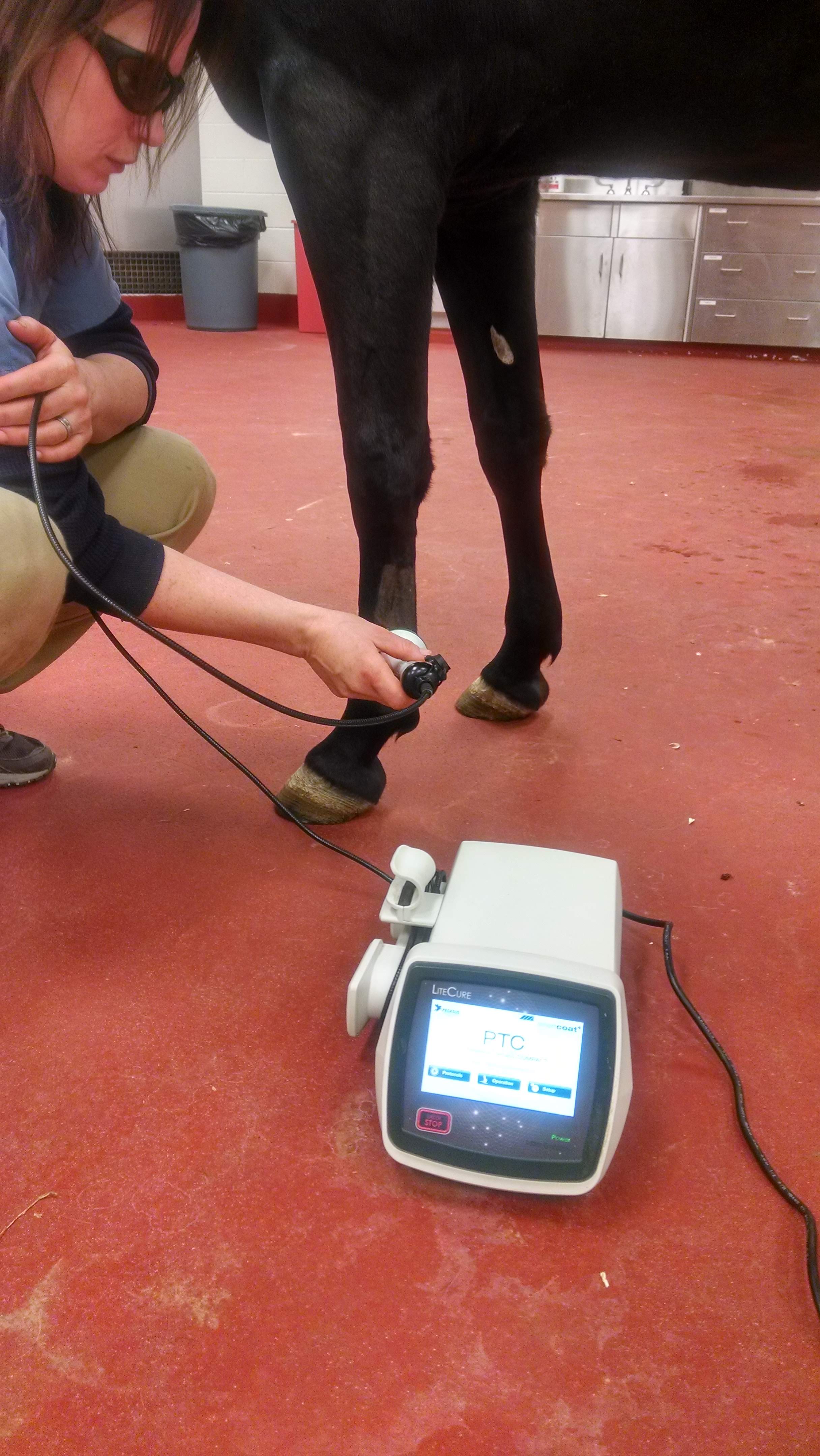Everything You Required to Know About Equine Therapy for Mental Wellness
Everything You Required to Know About Equine Therapy for Mental Wellness
Blog Article
Assessing the Effectiveness of Laser Treatment in Equine Treatment for Injury Rehab
The evaluation of laser therapy's performance in equine injury rehabilitation pivots on multiple elements, including recuperation time, pain reduction, and cells regeneration. Veterinarians frequently observe exceptional results with laser therapy contrasted to conventional techniques, positioning it as a vital component in equine treatment. Equine Therapy.

Comprehending Laser Therapy
Laser therapy has actually come to be a critical tool in veterinary medication, particularly in the treatment of equine problems. Recognized for its non-invasive nature and efficacy, laser therapy includes the application of details wavelengths of light to boost cells fixing and decrease inflammation. This healing modality is significantly favored for its capability to increase the recovery process in equines dealing with a selection of bone and joint injuries and chronic problems.
The primary system behind laser therapy is its capacity to enhance mobile features. When laser light passes through the skin, it is absorbed by mitochondria, the powerhouse of cells, which brings about raised production of adenosine triphosphate (ATP) This biochemical power increase helps with mobile repair and regrowth. In addition, laser treatment promotes vasodilation, enhancing blood flow and oxygen delivery to broken cells, therefore speeding up recuperation.
In equine medicine, laser treatment is especially beneficial for conditions such as tendonitis, osteo arthritis, and injury recovery. The strategy is lauded for its pain-relieving properties, allowing equines to reclaim wheelchair and feature a lot more swiftly. Veterinarians likewise appreciate its marginal negative effects compared to other therapy techniques, making it a reliable and secure choice for equine treatment.
Exactly How Laser Treatment Works
To recognize how laser therapy functions, it is vital to explore the interaction in between light power and organic cells. Laser therapy, likewise known as Low-Level Laser Therapy (LLLT) or photobiomodulation, utilizes certain wavelengths of light to penetrate cells and boost mobile procedures. The device rests on the absorption of photons by cell chromophores, largely within the mitochondria, which are essential for power production.
Upon absorption, these photons activate a collection of biochemical changes, improving mitochondrial function and leading to boosted adenosine triphosphate (ATP) manufacturing. This surge in ATP increases mobile metabolic rate, promoting tissue repair and regrowth. In addition, laser therapy modulates inflammatory feedbacks by affecting cytokine levels and lowering oxidative stress, therefore alleviating pain and swelling.
An additional significant facet of laser therapy is its function in boosting microcirculation. The treatment advertises vasodilation, improving blood flow and oxygen delivery to broken tissues. This helps with the elimination of mobile look at this website debris and sustains the spreading of fibroblasts and collagen synthesis, crucial for wound healing.
Medical Proof
The efficiency of laser treatment in equine treatment has actually been substantiated through different professional studies, showcasing its therapeutic possible throughout a variety of conditions. A study conducted by Turner et al. (2012) demonstrated that steeds treated with low-level laser treatment (LLLT) for tendon injuries displayed increased healing compared to those obtaining standard treatments.
Likewise, research study by Johnson and associates (2015) concentrated on equine muscle injuries, revealing that laser treatment dramatically sped up muscle fiber regeneration and lowered muscle rigidity. These searchings for were proven by histological evaluations showing better muscle cells organization. Scientific assessments have shown that laser therapy can minimize persistent conditions such as osteo arthritis. A research by Smith et al. (2018) reported that equines with osteoarthritic joints right here experienced significant discomfort relief and raised series of movement complying with a program of laser treatment sessions.
Veterinarian Insights
Veterinary specialists have increasingly identified the value of laser therapy in equine therapy, citing both empirical proof and direct experience. Dr. Jane Smith, a leading equine vet, notes that laser treatment has shown impressive effectiveness in minimizing swelling and accelerating cells repair work.
Veterinarians also appreciate the flexibility of laser therapy. She aims out that laser treatment can be tailored to the certain requirements of each equine, guaranteeing optimal results.

Practical Considerations
A vital element of applying laser therapy in equine treatment entails understanding the functional factors to consider that ensure its effectiveness and security. Firstly, it is important to choose the suitable laser gadget, as various kinds differ in wavelength, power, and penetration deepness. Vets must be well-versed in these specifications to customize therapy methods successfully to every injury type
Moreover, the frequency and duration of laser treatment sessions need careful planning to optimize restorative benefits while decreasing any type of possible damaging results. Consistent tracking of the steed's reaction to treatment can assist necessary modifications in the treatment regimen. Developing blog a secure and regulated setting during treatments is likewise important to stop accidental exposure to laser exhausts, which can hurt both the steed and the trainer.
Educating and accreditation of employees administering laser therapy are paramount to guarantee correct strategy and to support security criteria. In addition, maintaining precise documents of each session, consisting of laser settings and observed results, is essential for evaluating the total efficiency of the therapy and for making data-driven choices.
Conclusion
Laser treatment has actually arised as a reliable technique in equine injury rehab, providing significant advantages in recuperation time, pain relief, and cells healing. For ideal outcomes, continual tracking and customized treatment procedures stay important in leveraging the complete potential of laser therapy in equine treatment.
Report this page